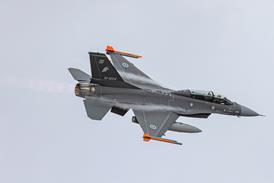Graham Warwick/WASHINGTON DC
European and US airworthiness authorities may exempt general aviation aircraft under 2,700kg from new regulations intended to harmonise the certification standards applied to derivatives of existing designs.
The International Certification Procedures Task Force (ICPTF), which includes the European Joint Aviation Authorities and US Federal Aviation Administration, has been working for some time to agree an approach to the approval of derivative aircraft. The initiative is intended to encourage manufacturers to adopt the latest certification standards when developing derivatives, says Tom McSweeny, director of the FAA's aircraft certification service.
The general aviation industry is concerned that an agreement would penalise companies developing aircraft modifications which are approved under supplemental type certificates (STCs). "The FAA could [for example] require an owner installing a new aircraft interior to bring everything up to latest standards, including installing new seat belts and 16g seats," argues the US Aircraft Owners and Pilots Association.
Alerted to the concerns, the FAA has asked the Aviation Rule-making Advisory Committee (ARAC) for a recommendation to be incorporated into the final rule, expected by year end. "The FAA is open-minded on this," says McSweeny, adding: "ARAC still has to respond with a proposal."
The ICPTF was formed to harmonise European and US certification of derivatives, in part because of previous disputes between Airbus and Boeing, but also to accelerate the introduction of new safety standards. "We recognised that industry was doing more derivative development than new model development. Where we expected to see new safety standards incorporated into designs within five or so years, they were not becoming effective for 10 to 15 years," McSweeny says.
While the ICPTF's efforts are oriented more towards air transport aircraft, McSweeny says the taskforce worked with Cessna to upgrade the certification basis of its new piston singles "almost" to the latest Part 23 rule, rather than the CAR 3 used for the original.
Source: Flight International























